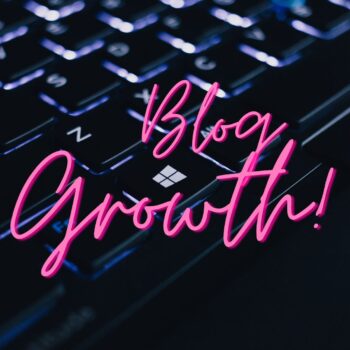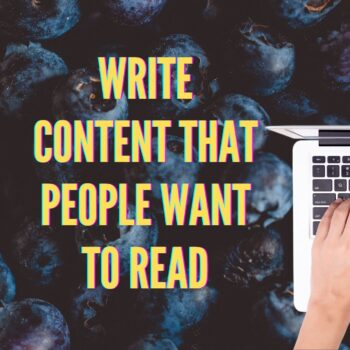Are you tired of pouring your heart and soul into your blog posts, only to have readers vanish before reaching the end? Do you feel like your conclusions fizzle out, leaving your audience with a whimper instead of a bang?
The truth is, crafting a compelling ending is just as important as nailing your introduction. It’s your final chance to leave a lasting impression, encourage action, and keep readers coming back for more. Think of it as the grand finale of your content symphony – the part that leaves them wanting an encore.
Unfortunately, many bloggers struggle to write effective endings, leaving readers feeling unsatisfied or simply bouncing off the page. But fear not! In this comprehensive guide, we’ll unveil the secrets to mastering blog post endings. We’ll delve into the psychology of conclusions, explore various ending types with real-life examples, and equip you with actionable tips to write endings that captivate, convert, and leave a lasting impact.
By the time you’re done reading, you’ll have a treasure trove of techniques to elevate your blog posts from “meh” to “mesmerizing,” ensuring your readers stay hooked until the very last word. So, let’s dive in and transform your blog post endings from forgotten afterthoughts into powerful tools for engagement and growth.
Why Blog Post Endings Matter More Than You Think
Think of your blog post as a rollercoaster ride. The introduction is the climb up the first hill, building anticipation. The body is the thrilling twists and turns, keeping readers engaged. But the ending? That’s the final drop, the moment that leaves a lasting impression and determines whether riders will hop back in line for another go.
The Power of a Powerful Conclusion
A strong blog post ending is not just a formality; it’s a strategic tool that can significantly impact your blog’s success. Here’s why it matters:
- Leave a Lasting Impression: Like a memorable movie scene, a well-crafted ending lingers in the reader’s mind, solidifying your message and making your content more memorable.
- Encourage Action: Whether it’s subscribing to your newsletter, leaving a comment, or sharing your post, a compelling ending can motivate readers to take the next step.
- Reduce Bounce Rate: A captivating conclusion keeps readers engaged, encouraging them to explore more of your content and spend more time on your site.
- Boost Social Shares: A thought-provoking or shareable ending can increase the likelihood of your post being shared on social media, expanding your reach.
- Build Anticipation: A teaser for future content or a cliffhanger can leave readers eager for your next post, increasing return visits.
Common Ending Blunders to Avoid
While a strong ending can elevate your blog post, a weak one can leave readers feeling deflated and disengaged. Here are some common mistakes to avoid:
- Abrupt Ending: Ending a post without a proper conclusion feels unfinished and leaves readers hanging.
- Excessive Summary: Repeating the main points verbatim is tedious and doesn’t add any new value.
- Irrelevant Tangents: Straying off-topic in your conclusion confuses readers and dilutes your message.
- Ignoring the Call to Action: Missing the opportunity to encourage readers to take the next step is a wasted opportunity.
- Generic Closings: Using clichés like “In conclusion” or “Thanks for reading” feels impersonal and uninspired.
Measuring the Impact: Key Metrics to Track
How do you know if your blog post endings are hitting the mark? Here are some essential metrics to monitor:
- Bounce Rate: A high bounce rate indicates that readers are leaving your post quickly, potentially due to a weak ending. Aim to decrease this metric.
- Time on Page: A longer time on page suggests that readers are engaged with your content, including your ending.
- Social Shares: If your post is being shared frequently, it’s a good sign that your ending is resonating with readers.
- Comments: A lively comment section indicates that your ending has sparked conversation and engagement.
By analyzing these metrics, you can gain valuable insights into how your endings are performing and make necessary adjustments to improve their effectiveness. To learn more about analyzing your blog’s performance and making data-driven decisions, check out our guide on data-driven content strategy.
The Anatomy of a Powerful Ending: Crafting Conclusions That Captivate
Think of your blog post ending as a well-composed symphony. Each element plays a crucial role in leaving a lasting impression and achieving your desired outcome. Let’s break down the key components that make up a truly compelling conclusion:
Summary of Key Points (Optional):
- The Purpose: Briefly remind readers of the most important takeaways from your post, reinforcing your message without being redundant.
- When to Use It: Most effective in long, informational articles or guides where readers may need a refresher.
- How to Do It: Use concise language and avoid repeating verbatim from earlier sections. Focus on the core message and avoid excessive detail.
Call to Action (CTA):
- The Purpose: Guide readers on what to do next, whether it’s leaving a comment, subscribing to your newsletter, sharing the post, or purchasing a product.
- When to Use It: Almost always! Every blog post should have a clear CTA to guide readers towards your desired outcome.
- How to Do It: Use strong verbs and make the action clear and easy to take. Offer incentives or create a sense of urgency to increase conversions.
Thought-Provoking Question:
- The Purpose: Spark further engagement and encourage discussion in the comments section.
- When to Use It: Ideal for opinion pieces, controversial topics, or posts that invite reader participation.
- How to Do It: Ask open-ended questions that require more than a simple “yes” or “no” answer. Encourage readers to share their thoughts and experiences.
For more tips on encouraging reader interaction, check out our guide on how to get comments on your blog posts.
Tease for Future Content:
- The Purpose: Create anticipation for your upcoming posts and entice readers to return to your blog.
- When to Use It: Effective when you have a consistent publishing schedule or a series of related posts.
- How to Do It: Briefly mention the topic of your next post or offer a sneak peek of what’s to come. Be specific and create a sense of excitement.
Personal Touch:
- The Purpose: Connect with your audience on a deeper level and leave a lasting impression.
- When to Use It: Suitable for all types of blog posts, but especially effective in personal stories or opinion pieces.
- How to Do It: Share a relevant anecdote, personal reflection, or quote that relates to the topic of your post. Be authentic and let your personality shine through.
Remember, the best blog post endings are those that leave readers feeling satisfied, inspired, and eager for more. By incorporating these core elements and experimenting with different combinations, you can craft conclusions that resonate with your audience and achieve your desired goals. For a deeper dive into crafting compelling content, explore our guide on how to write captivating blog content.
10+ Proven Techniques for Memorable Blog Post Endings (With Examples)
Let’s dive into the heart of the matter: the specific techniques you can use to craft blog post endings that not only tie up your content neatly but also leave a lasting impact on your readers. Consider this your arsenal of tools for creating conclusions that captivate, inspire, and encourage action.
The Summary Ending: Reinforcing Key Takeaways
A summary ending is like a friendly reminder, recapping the main points of your blog post in a concise and impactful way. It’s especially useful for longer, information-packed articles where readers might appreciate a quick review of the key takeaways.
Example: In this guide, we’ve explored the top 10 SEO strategies to skyrocket your blog traffic in 2024. From keyword research to technical optimization, these actionable tips can help you attract more readers, improve your search rankings, and ultimately achieve your blogging goals. Remember, SEO is an ongoing process, so stay consistent, track your results, and adapt your strategies as needed.
The Call to Action (CTA) Ending: Guiding the Next Step
Every blog post should have a clear purpose, and your ending is the perfect place to drive that purpose home. A strong call to action (CTA) tells readers exactly what you want them to do next, whether it’s leaving a comment, sharing the post, signing up for your newsletter, or purchasing a product.
Example: Ready to transform your blog into a traffic-generating machine? For a structured approach to building your check out the New Blogger Action Plan and start your blogging journey with a clear roadmap.
The Question Ending: Sparking Curiosity and Conversation
Questions are powerful tools for engagement. Ending your blog post with a thought-provoking question encourages readers to pause, reflect, and share their opinions in the comments section.
Example: Now that you know the secrets to writing captivating blog post endings, what technique are you most excited to try? Share your thoughts and experiences in the comments below!
The Cliffhanger Ending: Leaving Them Wanting More
Create a sense of anticipation and intrigue by ending your blog post with a cliffhanger. This technique is particularly effective when you have a series of related posts or want to build excitement for your next piece of content.
Example: Next week, we’ll dive deeper into the art of storytelling in blog posts. Get ready to discover how to weave compelling narratives that captivate your audience and keep them coming back for more. Stay tuned!
The Anecdote Ending: Adding a Personal Touch
Sharing a personal story or experience related to your topic can create a deeper connection with your audience. Anecdotes add a human touch to your writing and make your content more relatable.
Example: When I first started blogging, I struggled to write compelling endings. But after experimenting with different techniques and learning from my mistakes, I finally found what worked. And now, I’m sharing those secrets with you so you can avoid the same struggles and achieve even greater success.
The Quote Ending: Sharing Wisdom and Inspiration
A well-chosen quote can add credibility to your content and leave a lasting impression on your readers. It can also serve as a source of inspiration or motivation.
Example: As Maya Angelou once said, “I’ve learned that people will forget what you said, people will forget what you did, but people will never forget how you made them feel.” So, let’s strive to write blog post endings that not only inform but also inspire and uplift our readers.
These are just a few examples of the many ending techniques you can use to elevate your blog posts. Remember, the best ending is the one that aligns with your content, resonates with your audience, and leaves them wanting more. Experiment with different approaches, track your results, and find the winning formula that works best for you and your blog.
Choosing the Right Ending for Your Blog Post: A Match Made in Reader Heaven
Now that you’ve got an arsenal of ending techniques at your disposal, how do you decide which one is the perfect fit for each blog post? It’s like choosing the right outfit for an occasion – you want to make sure it complements your style and leaves a lasting impression.
Match the Ending to the Content: A Tailored Approach
Not all endings are created equal, and the best choice will depend on the type of content you’re crafting:
- Informational Posts: These posts aim to educate and inform. A summary ending or a call to action that encourages further learning (e.g., downloading a resource or enrolling in a course) works well here.
- Persuasive Posts: These posts seek to convince readers of a particular viewpoint. A strong call to action or a thought-provoking question that encourages debate can be effective.
- Personal Posts: These posts share personal experiences or reflections. An anecdote ending or a personal touch can add warmth and authenticity.
- List-Style Posts (Listicles): A summary or a call to action focused on applying the tips from the list is often a good fit.
- How-To Guides: These posts provide step-by-step instructions. A summary or a question encouraging readers to share their results can be effective.
Consider Your Audience: Know Your Readers
Your blog’s target audience plays a crucial role in choosing the right ending. Consider their interests, preferences, and level of engagement:
- Highly Engaged Audience: They’re more likely to respond to thought-provoking questions or cliffhangers that encourage further interaction.
- New or Casual Readers: A clear summary or a simple call to action might be more effective in guiding them towards the next step.
- Niche Audience: Tailor your ending to their specific interests or pain points. For example, a personal finance blog might end with a call to action to calculate their net worth, while a travel blog might tease an upcoming destination guide.
Experiment and Test: Find Your Winning Formula
Don’t be afraid to experiment with different ending styles and see what resonates best with your audience. Track your results (using the metrics mentioned in Section 1) and see which types of endings lead to more engagement, shares, or conversions.
Here are some additional tips for choosing the right ending:
- Consider the Tone: Your ending should match the overall tone of your blog post. A serious, informative post might not warrant a humorous ending, while a lighthearted post could benefit from a playful conclusion.
- Keep it Concise: Your ending shouldn’t drag on. Aim for a concise and impactful conclusion that leaves readers wanting more.
- Don’t Introduce New Information: Your ending should wrap up your existing ideas, not introduce new ones.
By tailoring your endings to your content, audience, and overall goals, you can create conclusions that not only satisfy readers but also drive engagement, encourage action, and ultimately grow your blog.
FAQ: Your Burning Blog Ending Questions Answered
Let’s address some of the most common questions about crafting those all-important final words:
1. How long should a blog post ending be?
There’s no one-size-fits-all answer, but a good rule of thumb is to keep it concise and impactful. Aim for 100-200 words, but don’t be afraid to go shorter or longer depending on the context of your post. Remember, the goal is to leave a lasting impression without overwhelming your readers.
2. Should I always include a call to action (CTA) in my ending?
While it’s not mandatory, including a CTA is highly recommended. It’s your chance to guide readers towards a specific action, whether it’s leaving a comment, sharing your post, subscribing to your newsletter, or checking out a product or service. Even a simple invitation to leave a comment can boost engagement and foster a sense of community.
3. Is it okay to end with a quote or statistic?
Absolutely! Quotes and statistics can be powerful tools for reinforcing your message and adding credibility to your content. However, make sure the quote or statistic is relevant to your topic and supports your overall argument. Don’t just throw in a random quote for the sake of it.
4. What if I can’t think of a good ending?
Writer’s block happens to the best of us! If you’re struggling to craft a compelling ending, here are a few tips:
- Revisit your introduction: See if there’s a way to tie your ending back to a question or statement you made at the beginning.
- Brainstorm a list of potential endings: Don’t censor yourself at this stage – just write down any ideas that come to mind.
- Take a break: Step away from your computer for a few minutes and come back with fresh eyes.
- Ask for feedback: Get input from a friend, colleague, or online community to see what resonates with them.
Remember, there’s no shame in seeking inspiration from other writers or experimenting with different techniques until you find something that clicks. If you’re just starting your blogging journey, our guide on launching a new blog can provide valuable insights and resources.
5. How can I track the effectiveness of my blog post endings?
The best way to gauge the effectiveness of your endings is to track relevant metrics:
- Bounce Rate: Are readers leaving your page quickly after reaching the end?
- Time on Page: Are readers spending enough time on your post to read the ending?
- Social Shares: Are people sharing your post on social media?
- Comments: Are readers leaving comments or engaging in discussions based on your ending?
- Click-Through Rate (CTR): If you include a call to action, are people clicking on it?
By analyzing these metrics, you can identify which types of endings resonate most with your audience and adjust your approach accordingly.
Remember, crafting effective blog post endings is a skill that takes practice and experimentation. By understanding the core elements, exploring different techniques, and tracking your results, you can create conclusions that leave a lasting impact and elevate your blog to new heights.
Conclusion: Your Blog Post Endings, Your Reader’s Final Impression
Remember, your blog post ending isn’t just a sign-off; it’s a final flourish, a parting gift to your reader. It’s the difference between a reader clicking away and a reader clicking “subscribe,” sharing your post, or eagerly anticipating your next piece.
Don’t underestimate the power of a well-crafted conclusion. It’s your chance to solidify your message, inspire action, and leave a lasting impression that keeps readers coming back for more.
As you embark on your journey to create more impactful blog post endings, remember these key takeaways:
- Match the ending to your content and audience.
- Experiment with different techniques to find what resonates best.
- Track your results and make adjustments as needed.
Now it’s your turn to put these techniques into practice. Embrace the challenge, experiment with different styles, and watch as your blog post endings become powerful tools for engagement and growth.
Your Turn:
Which of these ending techniques resonates most with you? Have you tried any other strategies that have worked well for your blog? Share your thoughts and experiences in the comments below!
Craving More Blogging Tips? Don’t miss our comprehensive guide on 11 Simple Tips to Writing Better Blog Posts for a step-by-step approach to crafting compelling content from start to finish.









No Comments
Leave a comment Cancel